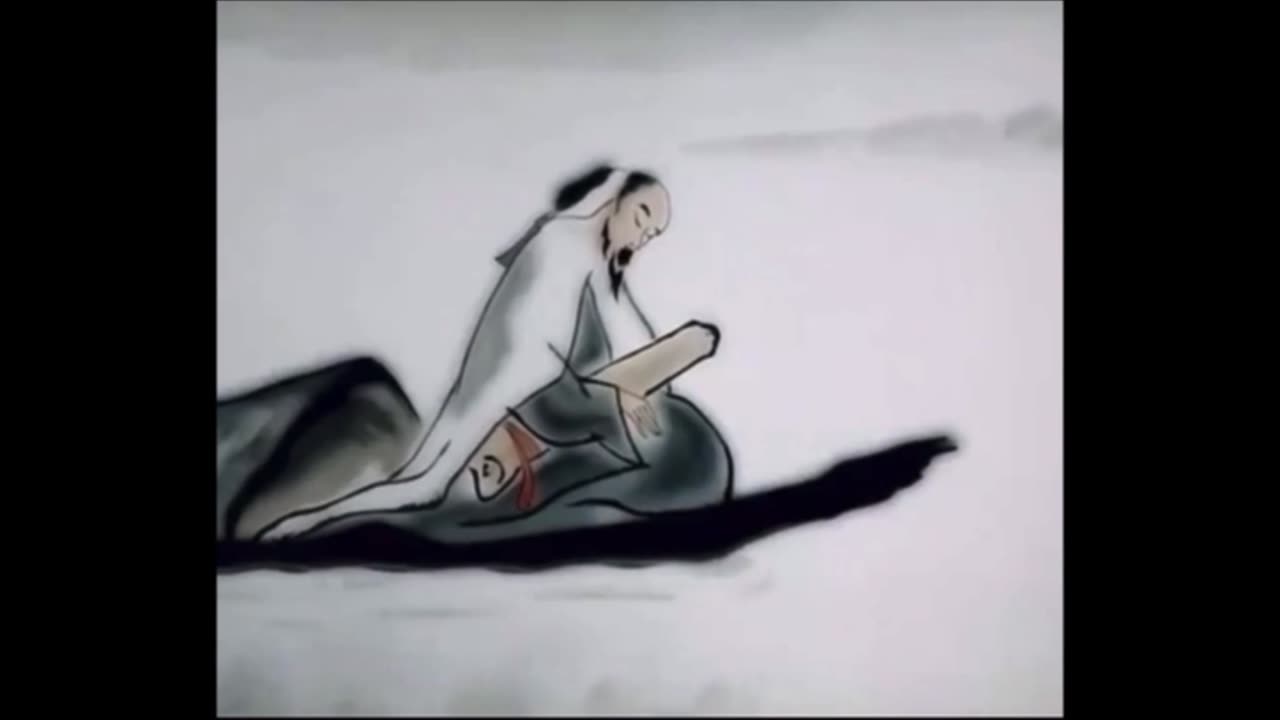Premium Only Content

Ink Wash Animation: 1988
In the 1950s, Chinese animation was made in Shanghai under the #Maoist government. Animators at #ShanghaiFilmStudio, which was funded and owned by the government, were tasked with creating cartoons for children. The artists educated themselves by studying animated films from America, Japan and Russia.
“We learned everything we could from them, and they all influenced us to a certain degree,” recalled Duan Xiaoxuan, a pioneering camerawoman at the studio. “But how were we supposed to make something actually Chinese?”
Led by director Te Wei, the #Shanghai animators set about solving that problem. The political winds were in their favor in the mid-1950s. #Inkwash painting was in vogue, after being denounced just a few years before. What was praised or banned under #Mao could change at a moment’s notice — suddenly, the “opponents of traditional ink painting were considered enemies of the nation,” wrote historian Daisy Yan Du.
Focusing on traditional stories, the #上海 made cel animation inspired by Peking opera, and puppet films based on folktales. As time passed, and as the Shanghai Animation Film Studio came into being, the first ink-wash film was born — Little Tadpoles Looking for Mama (1960).
Sources:
Feeling of the Mountain and Water (1988)
Animation Obsessive Substack, https://animationobsessive.substack.com/p/animating-chinese-ink-wash-paintings
#animation #historyofanimation #chineseanimation #inkwashdrawing #inkwashanimation #viralshorts #viralshort #shortsviral #disney #disneyanimation #anime #historyofanimation #manga #dreamworks #art #d #digitalart #cartoon #illustration #anime #danimation #design #artist #drawing #motiongraphics #graphicdesign #artwork #aftereffects #blender #cinema #motiondesign #animationart #sketch #characterdesign #film #video #animated #artistsoninstagram #music #disney #love #motion #dart
-
 8:19
8:19
RadioWhoPoo
30 days agoSaltburn and Brideshead Revisited
39 -
 13:43
13:43
The Kevin Trudeau Show Limitless
1 day agoClassified File 3 | Kevin Trudeau EXPOSES Secret Society Brainwave Training
69.9K10 -
 1:09:23
1:09:23
The HotSeat
1 hour agoTrump’s Parade = Mocked, China’s Parade = Praised: Leftist Hypocrisy EXPOSED
2.26K1 -
 1:57:29
1:57:29
The Quartering
3 hours agoRFK Jr Goes NUCLEAR, Horrible Tomb Raider News, Anti-White Male Propaganda
84.1K20 -
 LIVE
LIVE
Dr Disrespect
6 hours ago🔴LIVE: Hell Is Us Launch - DR DISRESPECT’s First Look at the Scariest Game of 2025!
1,114 watching -
 DVR
DVR
Pop Culture Crisis
2 hours agoSabrina Carpenter Wants Feminist Approval, Demonic Rituals at Burning Man? | Ep. 910
10.9K1 -
 11:17
11:17
Dr. Nick Zyrowski
29 days agoTop 10 No CARB No SUGAR Foods That Will Change Your Health
22.3K4 -
 LIVE
LIVE
Chrissie Mayr
2 days agoChrissie Mayr's Content Hotel at The Villa Roma! Anthony Cumia, Dave Landau, Violet
49 watching -
![[Ep 741] RFK Jr. Hits Back at Rabid Dems | Portland Antifa Terrorists | The Evil That is the Left](https://1a-1791.com/video/fww1/bb/s8/1/W/U/c/f/WUcfz.0kob-small-Ep-741-RFK-Jr.-Hits-Back-at.jpg) LIVE
LIVE
The Nunn Report - w/ Dan Nunn
2 hours ago[Ep 741] RFK Jr. Hits Back at Rabid Dems | Portland Antifa Terrorists | The Evil That is the Left
172 watching -
 1:52:45
1:52:45
John Burk
4 hours agoThe Texas Hemp ban, DOJ removing guns from trans, and more.
13.7K3